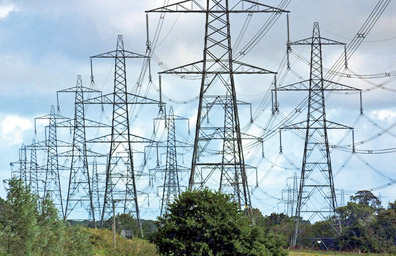|
CEB engineers warn if alternative power projects
don't get off the ground:
Power shortage inevitable
by Manjula Fernando
With nothing on the horizon to compensate for the delay in the
operation of the 500MW Sampur coal power plant, which should have begun
operations by 2013 but is yet to get off the ground, Sri Lanka will face
a serious power crisis by 2017.
CEB engineers have cautioned the government that by 2018, the power
sector may seriously fall short of the demand if the planned projects
fail to get off the ground.
 The country's electricity demand had increased by 5.2% during the
past 15 years. The average generation growth during the same period had
been 4.2%, with a disturbingly low 3.8% growth in the past five years,
according to the CEB's Long term generation expansion plan for 2015 -
2034. The country's electricity demand had increased by 5.2% during the
past 15 years. The average generation growth during the same period had
been 4.2%, with a disturbingly low 3.8% growth in the past five years,
according to the CEB's Long term generation expansion plan for 2015 -
2034.
With the government's financial sector plans to project Sri Lanka as
an industrial state, the demand is expected to shoot up within the next
few years, even higher than the CEB's existing forecasts. Sri Lanka's
current daily power needs fluctuate from 2200 MW - 1000 MW.
Power sector engineers point out since Sri Lanka cannot compete with
countries such as China and India for cheap labour and if the government
is serious about inviting big-time industries here, such as the
anticipated Volkswagen venture, cheap electricity would be its biggest
bargain point. Currently Sri Lakan consumers are among the highest
tariff payers in the region.
Finance Minister Ravi Karunanayake in a recent interview with the
Sunday Observer said, not just Volkswagen, they were looking at inviting
many other multinational companies to open factories here.
CEB's long-term generation expansion plan for 2015 - 2034 is
currently before the Public Utilities Commission of Sri Lanka (PUCSL)
for final approval.
The plan outlines several potential projects in the thermal
generation sector. It includes a 600MW Nuclear power plant to be
commissioned after 2030. Among others are two 600MW and 300MW coal-fired
steam plants, 300MW LNG fired combined cycle plants, 35MW and 105MW
Diesel-fired Gas Turbines and 150MW and 300MW Combined Cycle Plants.
Among the bigger projects planned in the near future are Sampur 11, a
coal power project funded by the Japanese and the Mannar 375 MW wind
power plant both expected to be commissioned in 2018. The Engineers
Union says these projects which are already on the cards should get off
the ground fast.
"We are worried that the land allocated for the Japanese funded
Sampur 11 is not finalised as yet."
The Indian plant owned by NTPC which was to be commissioned in Sampur
is reportedly being shifted to Foul Point in the Trincomalee district by
the Sri Lankan Government. This is the second time the US $ 500 million
project which was to be initiated in 2006, has been shifted.
In 2007, the NTPC relocated the plant from south of Trincomalee to
the north.
The CEB Engineers Union (CEBEU) President Athula Wanniarachchi said
the terms and conditions in the agreement with India on Sampur I, is
largely unfavourable for Sri Lanka, hence the Government should consider
re-negotiating the agreement.
Power experts also pointed out if the Government seriously commits
itself to the Mannar basin oil exploration, Sri Lanka has the potential
to tap Liquefied Natural Gas(LNG) as a cheap source of power
generation."
This will be cheaper than coal power and we have a chance to explore
this by 2020," a source in the CEB said.
Projects being expedited - Minister
Power and Renewable Energy Minister Ranjith Siyambalapitiya said they
were currently making plans to expedite all delayed projects in the
power sector and a committee headed by the Deputy Minister Ajith P.
Perera has been appointed last week to report on the delay of Indian
funded Sampur 1.
The committee has been asked to recommend measures within one week to
expedite this project. "I will be submitting a Cabinet paper next week
based on their report," the Minister said.
He said the Sampur II, the second coal power project in Trincomalee
district is currently being negotiated between the Governments of Japan
and Sri Lanka. "We are laying emphasis on non-conventional renewable
energy sources to meet our future energy needs and there are ongoing
efforts to remove obstacles and pave the way for smooth movement in this
sector," he added. |

